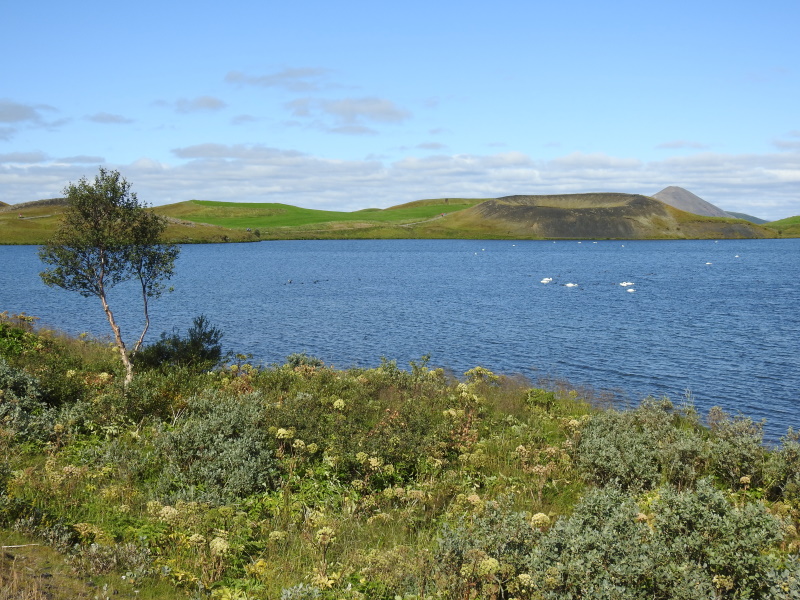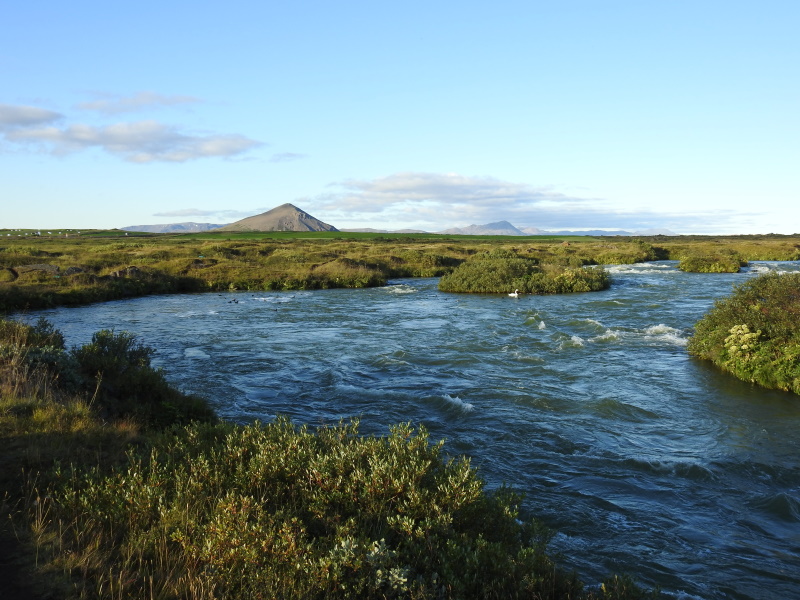Blog TWHS Visits
Mývatn and Laxá
The Mývatn-Laxá Nature Conservation Area in northern Iceland consists of Lake Mývatn - a shallow lake - and its outflowing river Laxá. Together they are important for bird conservation, especially of ducks. Of course (this is Iceland after all) they are located in an active volcanic area as well, which has shaped the landscape. There are several short walks that you can do from the road around the lake, which combined make for a fun, active day. Fortunately the weather was dry and sunny when I visited; in the rain the charm of this area will soon elude you.
I started at Höfdi, a small peninsula / rocky promontory which reaches into Lake Mývatn. I had arrived early, but the trail turned out to be closed between 10 p.m. and 10 a.m. to give the birds a rest. So I stopped by again later in the morning. The 1 hour-hiking trail here leads through a forest, which is a rarity in Iceland. It provides access to several excellent viewpoints over the lake and its rocks and islets created by lava.
I continued my loop around the lake by visiting Skutustadir. This is where the pseudo craters can be seen, the other potential OUV of this site next to the duck life. Pseudo craters are small hills that look like extinct volcanoes, but were actually formed when hot lava reached the lake. Water that came under it eventually pushed itself out of the “crater” like steam. This rare feature can only be found here, in Hawaii and on Mars.
In this area 2 walks are signposted: a short one to the top of the largest pseudo crater and a longer one along the waterfront and several craters. I choose the latter which took an hour – it was pleasant enough but nothing exciting. In the hotel opposite Skutustadir I ate lunch: very appropriate for the rich bird world of Myvatn I choose a ‘pulled goose’ burger.
I spent the rest of the day visiting some more spectacular geothermic and volcanic sites, but these probably will not be included in a future WH nomination. After dinner I went out again once more: to the point where the Laxá River enters the lake. This fast-flowing river is full of fish (Laxá means salmon, but there is also trout). The river mouth is particularly popular with the ducks of the lake. No fewer than 13 species live and breed here, including the rare harlequin duck. Unfortunately the prettier species had already moved to the sea for this year, so I had to make do with rather boring brown and black ducks (wigeons and tufted ducks I think). Spring offers the best possibilities to see them all.
While I was watching the ducks from the bridge over the Laxá (right at the crossing of roads 1 and 848), I noticed for the first time the large swarms of midges that give the lake its name. They do not bite people but are a delicacy for the birds. A substantial group joined me in the car, but died or otherwise vanished quickly.
In conclusion I’d say that Lake Myvatn is an excellent stop on the Ring Road for a day or so. I am a bit inconclusive whether it is outstanding enough for WH material, but its volcanic setting and the resulting hydrological conditions provide scientists with enough material to think and write about.
Els - 30 August 2020
Comments
Els Slots 30 August 2020
No, but I was not interested
Zoë Sheng 30 August 2020
Are the hot springs closed?


